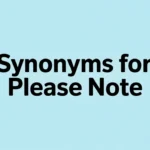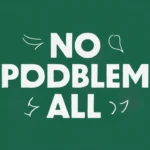The phrase “including, but not limited to” is commonly used in writing to introduce examples while making it clear that there are more possibilities beyond the ones listed. This phrase is especially popular in legal documents, business communication, academic writing, and even everyday conversations.
However, repeating the same phrase over and over can make your writing sound dull and repetitive. By using different variations, you can make your sentences more engaging and natural.
In this article, we will explore 15 different ways to say “including, but not limited to.” Each alternative has its own unique tone and use, making it easy to find the perfect fit for your writing. Whether you’re drafting an email, writing a report, or just improving your vocabulary, these options will help you sound more polished and professional. Let’s dive in!
Such As
One of the simplest alternatives to “including, but not limited to” is “such as.” This phrase introduces examples in a clear and concise way without sounding too formal.
For example:
- “The zoo has many animals, such as lions, tigers, and elephants.”
- “Our company offers various services, such as graphic design, marketing, and web development.”
“Such as” works well in both formal and informal writing. It’s a great option when you want to provide examples without making your sentence sound too complicated.
So next time you need to list examples, try using “such as” instead of “including, but not limited to.” It keeps your writing simple and easy to understand.
Among Others
The phrase “among others” is a great way to introduce examples while indicating that there are more beyond the ones listed. It adds a sense of openness to your sentence, making it sound more fluid.
For example:
- “She enjoys outdoor activities, including hiking, swimming, and cycling, among others.”
- “Our restaurant serves a variety of cuisines, such as Italian, Mexican, and Thai, among others.”
This phrase works well in both professional and casual settings. It helps keep your writing natural while still making it clear that the list isn’t exhaustive.
So if you want to avoid repeating “including, but not limited to,” try using “among others” instead. It’s a smooth and effective alternative.
READ MORE: Other Ways to Say “I Am Praying for You”
For Example
Another simple and widely used phrase is “for example.” It directly introduces examples and makes your writing feel more conversational.
For example:
- “Many animals live in the rainforest, for example, monkeys, parrots, and jaguars.”
- “There are many ways to stay healthy, for example, exercising regularly, eating nutritious food, and getting enough sleep.”
This phrase works well in both speaking and writing. It is perfect for when you want to give a clear and direct example of something.
If you want to make your writing sound more approachable, “for example” is a great alternative to “including, but not limited to.”
Such As, But Not Limited To

If you want a phrase that is close to “including, but not limited to” while still sounding a little different, try “such as, but not limited to.” It has a similar meaning but feels slightly more natural in casual writing.
For example:
- “The bookstore sells a variety of genres, such as, but not limited to, fiction, non-fiction, and mystery.”
- “The camp offers activities such as, but not limited to, kayaking, fishing, and hiking.”
This phrase keeps your sentence structured while avoiding unnecessary repetition. It works well in formal and semi-formal contexts.
Try using “such as, but not limited to” in your next piece of writing—it’s a great way to mix things up while keeping the meaning clear.
Including Examples Like
A more casual way to introduce examples is by using “including examples like.” This phrase makes your writing feel more relaxed and friendly.
For example:
- “The museum features exhibits including examples like ancient sculptures, medieval paintings, and historical artifacts.”
- “The company provides employee benefits, including examples like health insurance, paid vacations, and retirement plans.”
This alternative is useful for blogs, emails, or casual conversations where you want to list examples in a natural way.
If you want a fresh and engaging way to introduce examples, try using “including examples like” instead of the usual phrase.
Comprising

“Comprising” is a more formal and sophisticated way to express “including, but not limited to.” It works well in professional and academic writing.
For example:
- “The team comprises experts in marketing, finance, and technology.”
- “The menu comprises dishes from various international cuisines.”
This word is best used in situations where you want to sound more polished and professional. Just remember that “comprises” means “is made up of,” so avoid using “comprises of.”
If you’re writing a formal document, “comprising” is a great alternative that keeps your sentence clear and professional.
Consisting of
Similar to “comprising,” the phrase “consisting of” helps introduce examples in a professional and structured way.
For example:
- “The training program consists of online courses, workshops, and hands-on practice.”
- “The package consists of a flight ticket, hotel stay, and guided tours.”
This phrase works well in business, legal, or academic writing. It provides clarity while keeping your sentence smooth.
So if you need a professional-sounding alternative, “consisting of” is a great choice.
To Name a Few
If you want to keep your writing light and conversational, “to name a few” is a great alternative. It adds a friendly tone while making it clear that there are more examples.
For example:
- “The park is home to many animals, including deer, rabbits, and squirrels, to name a few.”
- “She has traveled to several countries, including Spain, Italy, and France, to name a few.”
This phrase is perfect for casual writing, emails, or even conversations. It keeps things engaging while avoiding repetition.
Try using “to name a few” next time you want to list examples in a fun and natural way!
Along with
“Along with” is another simple way to introduce examples while showing that there are more.
For example:
- “The store sells furniture, along with home decor and kitchenware.”
- “The school offers courses in math and science, along with art and music.”
This phrase is easy to use and works well in both casual and formal writing. It’s a great way to introduce examples without sounding repetitive.
So next time you need an alternative, try using “along with” in your sentence.
Among Many Others
A slight variation of “among others” is “among many others.” This phrase emphasizes that there are a lot more examples beyond the ones listed.
For example:
- “The festival features performances by famous artists, including Taylor Swift, Ed Sheeran, and Billie Eilish, among many others.”
- “The company provides benefits such as health insurance, paid leave, and retirement plans, among many others.”
This phrase adds a sense of variety and makes your writing more engaging. It works well in both casual and formal contexts.
If you want to emphasize that the list isn’t complete, “among many others” is a great alternative.
Including, Among Other Things
A formal yet flexible alternative to “including, but not limited to” is “including, among other things.” This phrase helps introduce examples while emphasizing that there are additional items not mentioned in the list.
For example:
- “The new policy covers workplace behavior, including, among other things, dress code, attendance, and communication guidelines.”
- “The course will cover various topics, including, among other things, programming, data analysis, and artificial intelligence.”
This phrase works well in professional and academic writing. It adds clarity while maintaining a polished tone.
If you’re writing a document where precision matters, “including, among other things” is a strong alternative that keeps your sentence formal yet easy to understand.
Encompassing
“Encompassing” is a great way to introduce examples while implying that they are part of a broader category. It sounds more sophisticated and is ideal for professional or academic writing.
For example:
- “The conference will feature speakers from various industries, encompassing technology, healthcare, and finance.”
- “The project involves multiple departments, encompassing research, marketing, and customer service.”
This phrase is useful when you want to highlight the range or scope of something. It works particularly well in formal reports, business proposals, and academic papers.
So next time you want to describe something with a broad reach, try using “encompassing” instead of “including, but not limited to.”
Not Exclusive To
A straightforward alternative that keeps the meaning intact is “not exclusive to.” This phrase makes it clear that the list is just a selection and that other options exist.
For example:
- “The company provides benefits not exclusive to health insurance, paid leave, and retirement plans.”
- “Her talents are not exclusive to singing; she is also an excellent dancer and actor.”
This phrase is effective in both formal and informal writing. It emphasizes that the list is open-ended, which can be useful when discussing policies, skills, or opportunities.
If you want a clear and professional way to introduce examples, “not exclusive to” is a great choice.
Including But Not Exclusive To

A close variation of “including, but not limited to” is “including but not exclusive to.” This phrase conveys the same meaning while adding a slightly different structure to your sentence.
For example:
- “The job responsibilities include but are not exclusive to project management, client communication, and report writing.”
- “Our vacation package includes but is not exclusive to accommodation, meals, and guided tours.”
This phrase is particularly useful in contracts, agreements, and policies where you need to make sure that the list of items is not restrictive.
If you want a formal yet slightly varied alternative, “including but not exclusive to” is a great option to use.
Covering Areas Like
“Covering areas like” is a great alternative when discussing topics, skills, or categories. It is particularly useful in business, education, and training-related discussions.
For example:
- “The workshop will cover areas like leadership development, team collaboration, and conflict resolution.”
- “The magazine features articles covering areas like travel, fashion, and technology.”
This phrase is easy to use and works well in professional settings. It allows you to introduce examples in a way that feels natural and structured.
So if you’re looking for a simple and effective way to list examples, “covering areas like” is a great alternative to try.
Conclusion
There are many ways to say “including, but not limited to,” and choosing the right phrase can make your writing more engaging, professional, or conversational. By varying your wording, you keep your content fresh and avoid sounding repetitive.
Whether you need a formal phrase for a business document or a casual one for a friendly email, the alternatives in this article will help you find the perfect fit. Try using different variations based on your audience and the tone you want to set.
By expanding your vocabulary, you can make your writing more dynamic and interesting. So next time you list examples, switch things up and try a new phrase!










